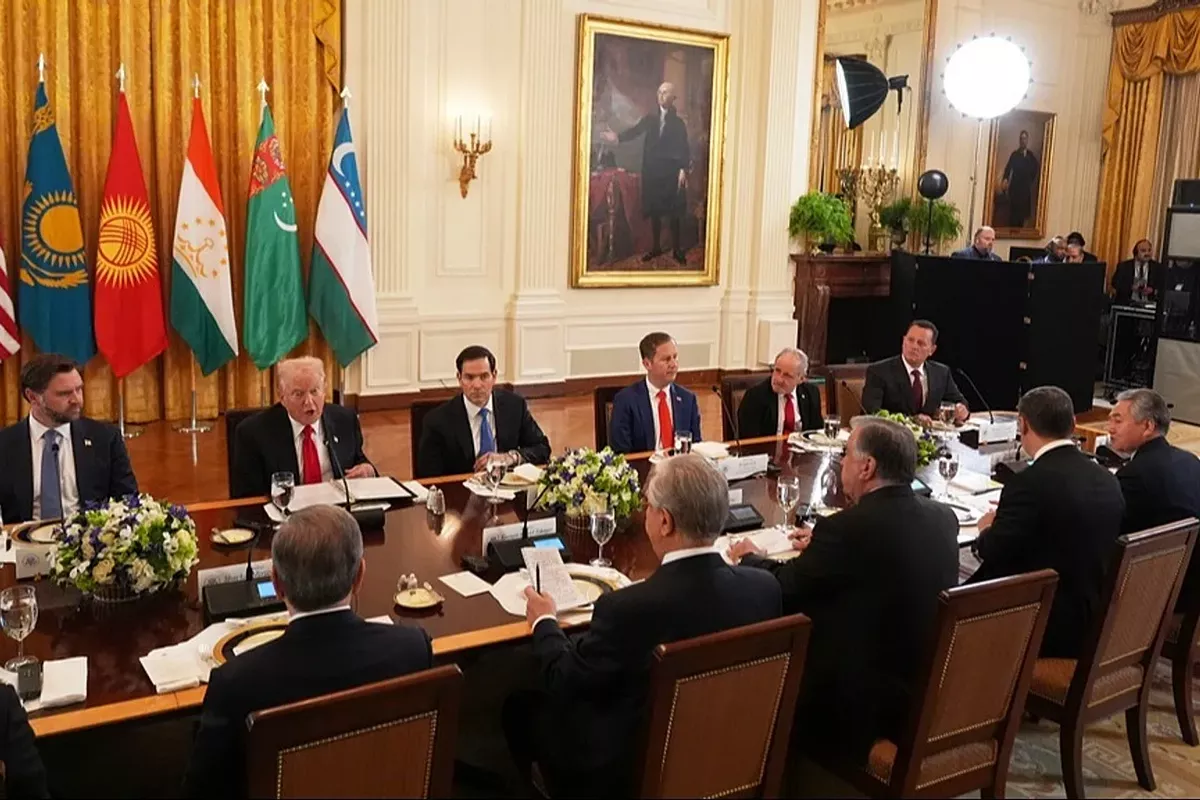
photo: Euronews
The second U.S.-Central Asia (C5+1) summit, held on November 6 in Washington, marked a significant shift in regional diplomacy, as all five Central Asian presidents met U.S. President Donald Trump at the White House for the first time. The agenda focused on logistics, energy, and, critically, access to rare-earth minerals, reflecting Washington’s growing interest amid its strategic rivalry with China.
The U.S. is intensifying engagement with the region, diversifying partnerships, and reducing dependence on major powers such as Russia and China. The summit also highlighted concrete economic initiatives, including proposals for investment cooperation and the development of regional transport routes like the Middle Corridor.
Azerbaijani economist Eldaniz Amirov told The Caspian Post that over the past five years, the emergence of new “tigers” in Central Asian states has demonstrated rapid transformation and sustainable development, a trend he remains convinced is continuing today.
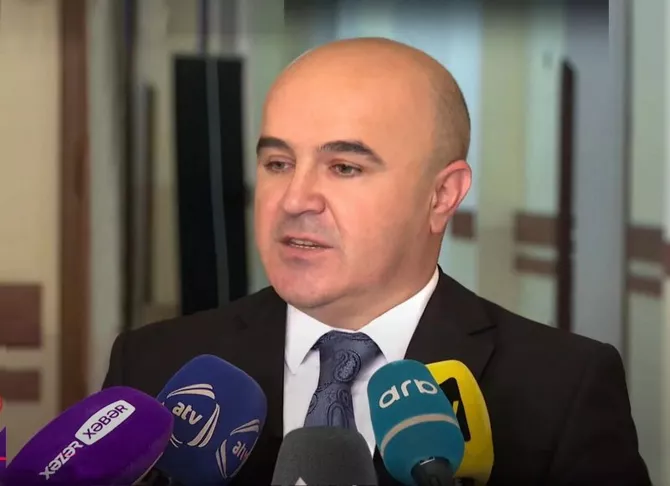
photo: Azerbaijani economist Eldaniz Amirov
According to Amirov, two key factors drive this dynamic: the consistent and rational economic policies adopted by regional countries, particularly Uzbekistan and Kazakhstan, and China’s expanding soft-power strategy in the region.
At the same time, he noted that the United States’ growing interest in Central Asia, reflected in recent high-level meetings, shows that geopolitical engagement in the region is intensifying, with all Central Asian states now situated within the orbit of great-power competition.
Amirov stressed that Washington and Beijing approach the region through fundamentally different models. The United States focuses on security, strengthening political institutions, and governance reforms, while China expands its influence through discreet but steady economic soft power.
He described China-Uzbekistan cooperation as the clearest example of Beijing’s strategy. Trade turnover between the two countries has already exceeded $14 billion, with nearly $12 billion recorded in the first nine months of the year alone - a growth of more than 28 percent. In August, 170 new Chinese companies were registered in Uzbekistan, bringing the total to more than 4,400.
Highlighting the contrast, Amirov noted that Uzbekistan’s partnership with the United States is built on a different foundation. While cooperation with China relies on infrastructure and capital inflows, the U.S. engagement model is based on strategic security, institutional partnerships, and reciprocal investment. He pointed to the U.S. President’s announcement that Uzbekistan plans to invest $35 billion into the U.S. economy over the next three years and more than $100 billion over the next decade.
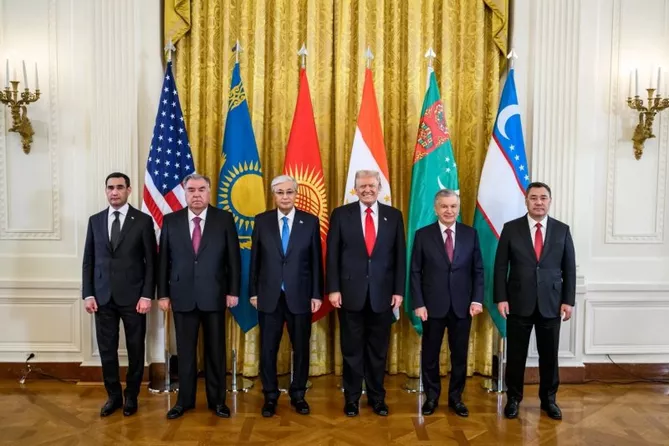
photo: Reuters
“China brings capital into Uzbekistan and strengthens its position within the country, while the United States attracts Uzbek capital into its own industrial sectors,” Amirov said. “This means two major powers are operating in the same region through parallel but fundamentally different mechanisms.”
He compared the current situation to the strategic competition between the Soviet Union and the United States in the 1980s, noting that similar dynamics are now visible between Washington and Beijing. China is quietly consolidating its presence, while the United States is trying to defend its position through firmer and more rapid actions. Whether the U.S. strategy will achieve its long-term goals remains an open question.
Kazakh political expert Almat Toyekin told The Caspian Post that Trump’s decision to gather the leaders of Central Asia is closely linked to the outcomes of UN Week held this September in New York.
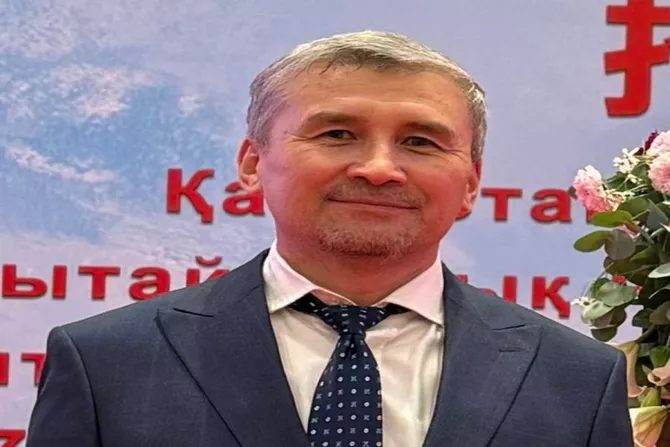
Photo: Kazakh political expert Almat Toyekin
During that event, the presidents of Central Asian states met with Trump, and two of the region’s key countries - Kazakhstan and Uzbekistan - signed multi-billion-dollar agreements.
According to Toyekin, Kazakhstan concluded a $4.2 billion deal to purchase around 300 American locomotives, while Uzbekistan’s MezAir signed a contract worth more than $8 billion for U.S.-made Boeing aircraft. These large-scale purchases, he noted, significantly contributed to Trump’s renewed interest in Central Asia, effectively representing substantial investments into the American economy.
Toyekin explained that this dynamic prompted Trump to invite Central Asian leaders for a follow-up meeting just six weeks later. On one hand, the meeting allowed the U.S. President to assess and build rapport with the leaders of a region located at a strategic crossroads between Europe and Asia, and between China and Russia.
However, he stressed that Trump approaches foreign relations primarily from a business perspective, evaluating cooperation based on the economic advantages it offers the United States. He recalled that Trump has repeatedly stated that within the first nine months of his presidency he managed to attract nearly $1 trillion into the U.S. economy, partly through higher tariffs. Kazakhstan and Uzbekistan, he added, also played a role through their increased purchases of American products.
Toyekin emphasized that there is an important geopolitical dimension as well. Central Asia lies between China and Russia, and the U.S.-China trade dispute continues. Agreements involving Kazakhstan’s large tungsten deposits and Uzbekistan’s rare-metal resources can therefore be viewed within the broader context of competition with China, which is investing heavily in mineral exploration across the region.
At the same time, he cautioned against assuming that Central Asian countries will shift their strategic orientation toward the United States. Geography, he said, remains decisive: Kazakhstan shares long borders with both Russia and China, and for all Central Asian states, these two powers will remain priority partners due to existing trade relations, infrastructure projects, and deep economic ties. For this reason, the region will continue its balanced, multi-vector foreign policy.
Toyekin noted that cooperation among Central Asian states also remains strong, with regular consultative meetings and another regional summit expected this November. He expressed hope that Azerbaijan would participate again.
He added that Trump’s initiative may be interpreted partly as a signal to Russia and China, but is unlikely to evolve into a broader strategic shift. The primary outcomes, in his view, will remain within the economic sphere, particularly involving mineral resources.
Mr Toyekin also highlighted that since the early 1990s, major American companies such as Chevron and ExxonMobil have operated in Kazakhstan’s Tengiz, Karachaganak, and Kashagan fields, ensuring a longstanding U.S. presence in the region’s energy sector. Similar opportunities may emerge in the development of rare-earth and critical mineral deposits across Kazakhstan, Uzbekistan, Tajikistan, and Kyrgyzstan, which would further expand American business involvement.
Such projects, he said, would benefit both sides, providing the Central Asian republics with advanced technologies and expertise while strengthening the economic footprint of U.S. companies.
Finally, Toyekin underscored the meeting’s relevance to regional transport connectivity. He pointed out that the Middle Corridor, passing through the Caspian Sea, Azerbaijan, Georgia, and Türkiye, has become increasingly important for trade between Central Asia and Europe, especially amid disruptions to northern routes caused by the Russia-Ukraine war. Kazakhstan and Azerbaijan, through their key seaports, continue to play a central role in the functioning of this corridor.
Adkhamjon Janobiddinov, an independent journalist and researcher from Uzbekistan, told The Caspian Post that the roots of Trump’s latest meeting with Central Asian leaders lie in the creation of the C5+1 format a decade ago.
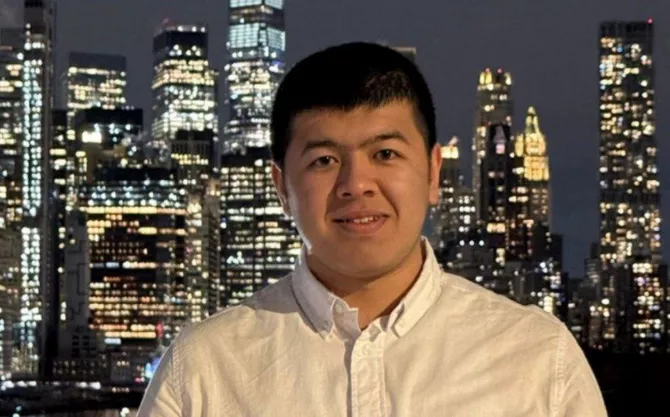
Photo: Adkhamjon Janobiddinov, an independent journalist and researcher from Uzbekistan
Established during the 70th UN General Assembly in 2015, the platform was launched when then-U.S. Secretary of State John Kerry met the foreign ministers of the five Central Asian republics. The initiative aimed to give the region a more unified voice and help it navigate relations with major powers such as Russia and China. The first C5+1 summit was held in Samarkand, Uzbekistan.
Janobiddinov noted that the Washington summit last week was prompted by a letter sent to President Trump on October 20 by the Chair and Ranking Member of the House Subcommittee on South and Central Asia. Representatives Sydney Kamlager-Dove and Bill Huizenga urged Trump to personally host the gathering, arguing that the 10th anniversary of the C5+1 format offered an important moment to advance U.S.-Central Asia engagement.
He added that Sergio Gor, the current U.S. ambassador to India and a former envoy for Central and South Asia who was born in Tashkent, played a key role in arranging the meeting. Gor, together with a U.S. deputy secretary of state, visited Uzbekistan in late October to discuss the growing partnership between Tashkent and Washington.
According to Janobiddinov, the Washington summit provided Central Asian governments with a platform to strengthen ties with the United States. “For Washington, it offered an opportunity to raise issues such as access to rare-earth elements. Central Asia hosts some of the world’s most significant deposits of critical minerals, which could help the U.S. reduce its reliance on Chinese supplies. From Uzbekistan’s perspective, this was the second meeting between President Shavkat Mirziyoyev and President Trump in two months,” he said.
The Uzbek expert noted that during the recent UN General Assembly session, Mirziyoyev was the only Central Asian leader to be received by Trump, and both meetings focused on expanding trade and investment links.
"At the C5+1 summit, Mirziyoyev outlined several proposals aimed at deepening regional cooperation. They included plans to establish a permanent C5+1 Secretariat, create a Coordinating Council for Investment and Trade, launch a Central Asian Investment Partnership Fund, form a Special Committee on Critical Minerals, and develop a Regional Partnership for Agro-Technological Innovation," he noted.
The expert said Mirziyoyev also suggested organizing a joint exhibition of Central Asian cultural heritage in major U.S. museums and proposed hosting the next C5+1 summit in Samarkand.
"Following the meeting, President Trump announced on his Truth Social platform what he described as a 'successful trade agreement' with Uzbekistan. He highlighted Uzbekistan’s plans to purchase and invest nearly $35 billion over the next three years, as well as more than $100 billion in key American sectors, including critical minerals, aviation, automotive parts, infrastructure, and information technology,” Janobiddinov concluded.
Share on social media